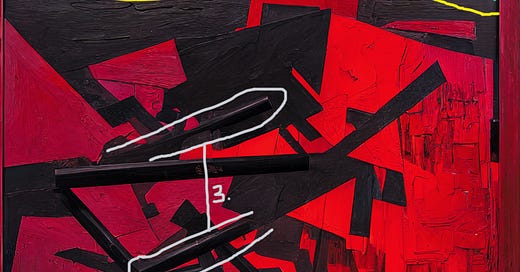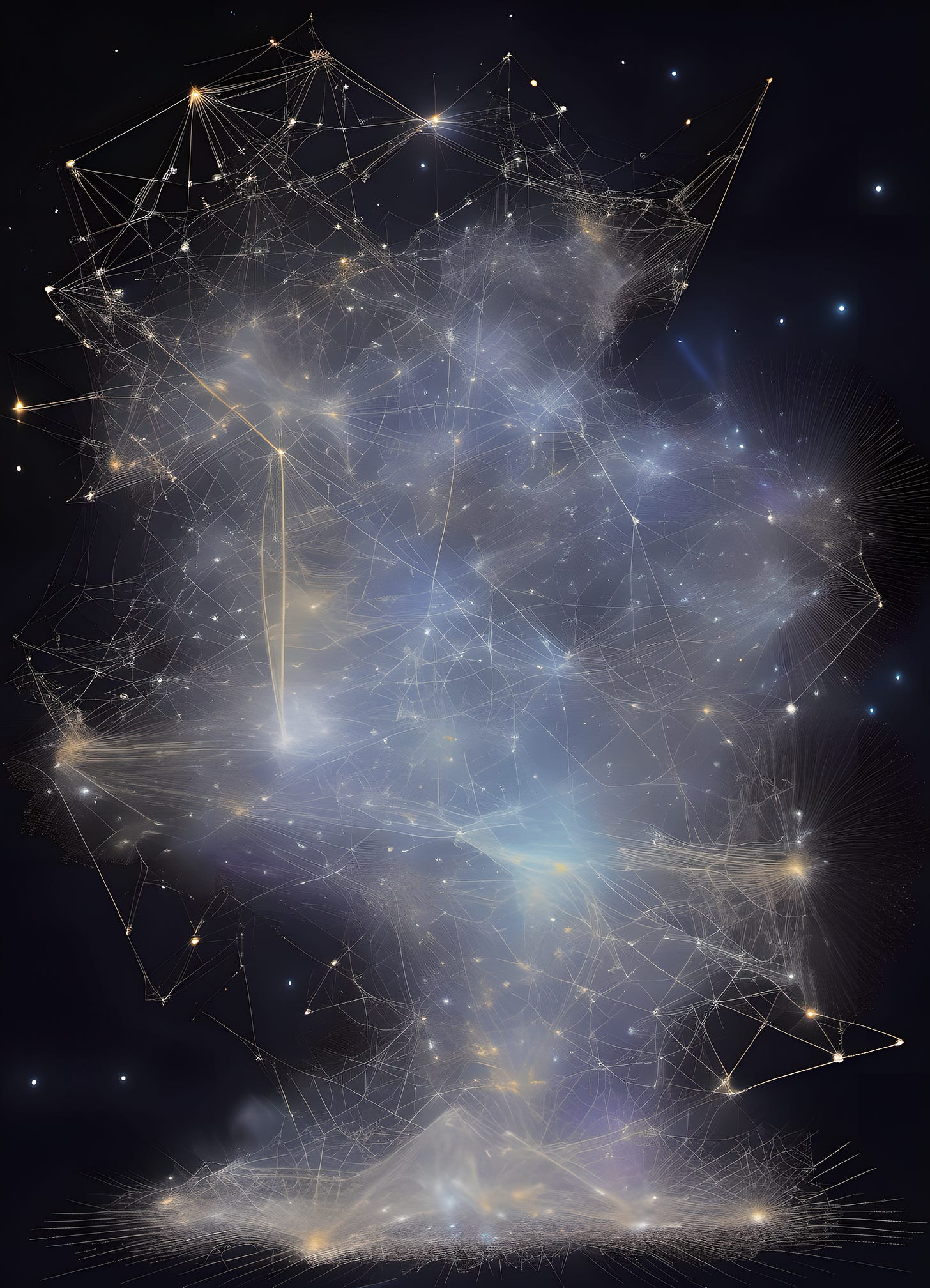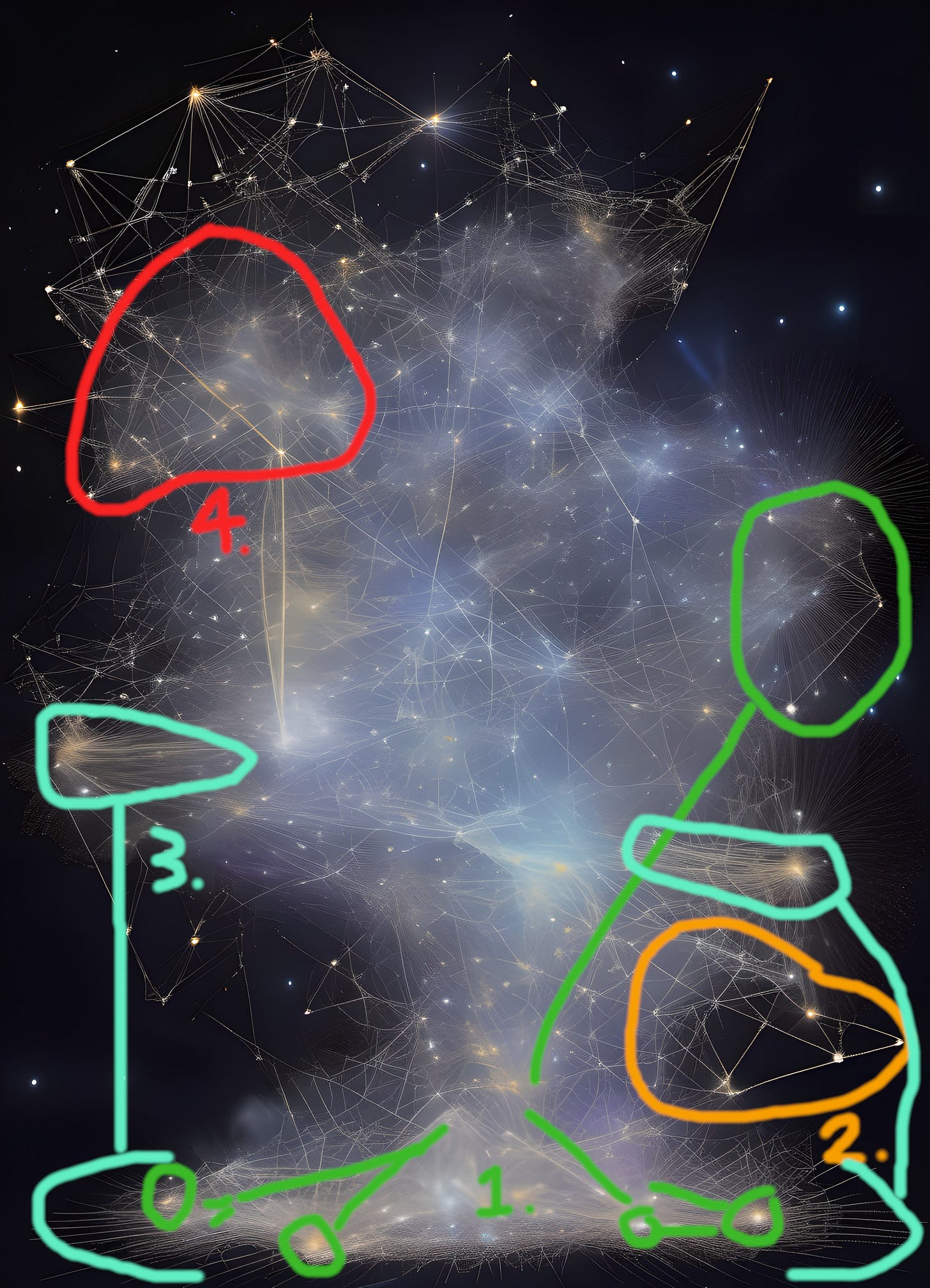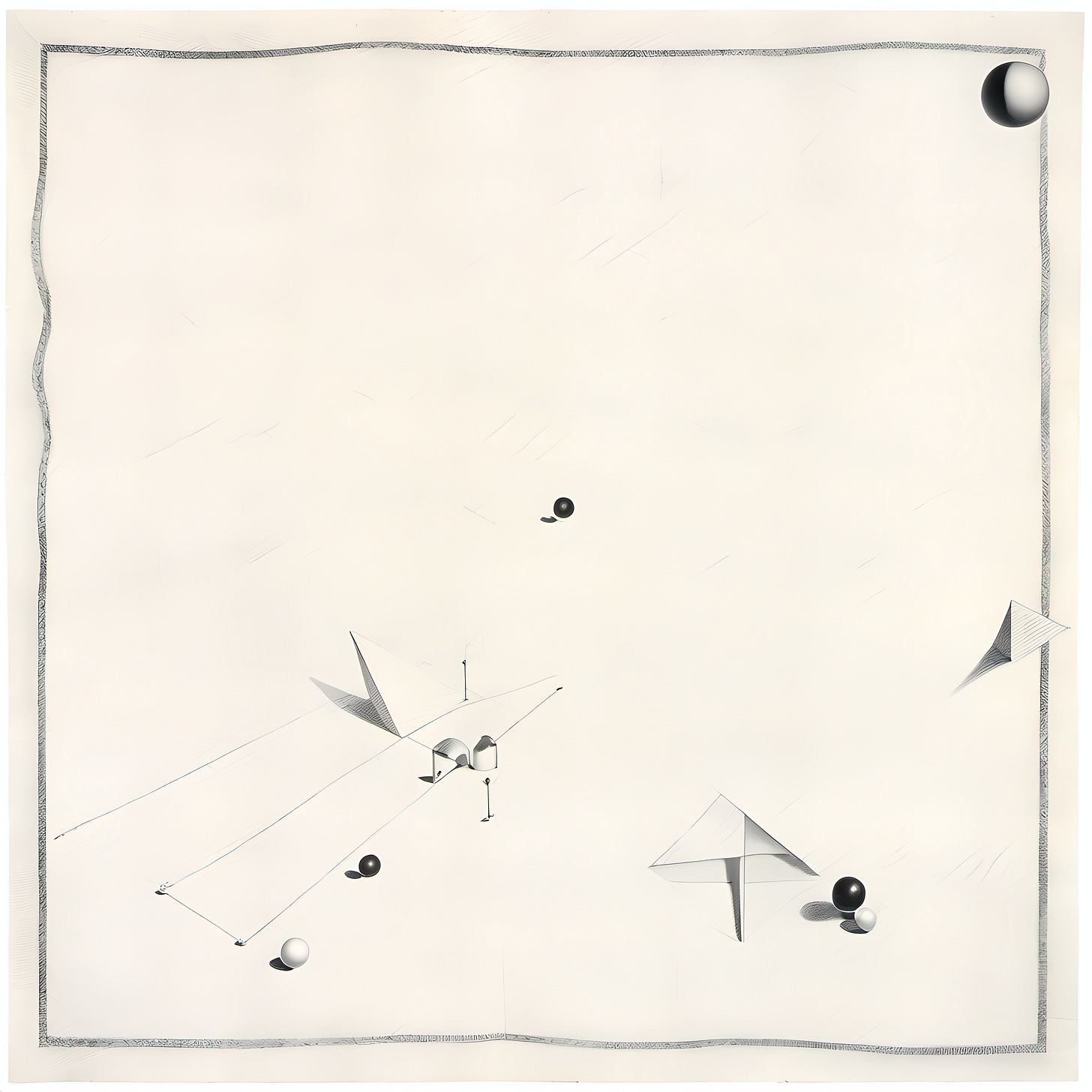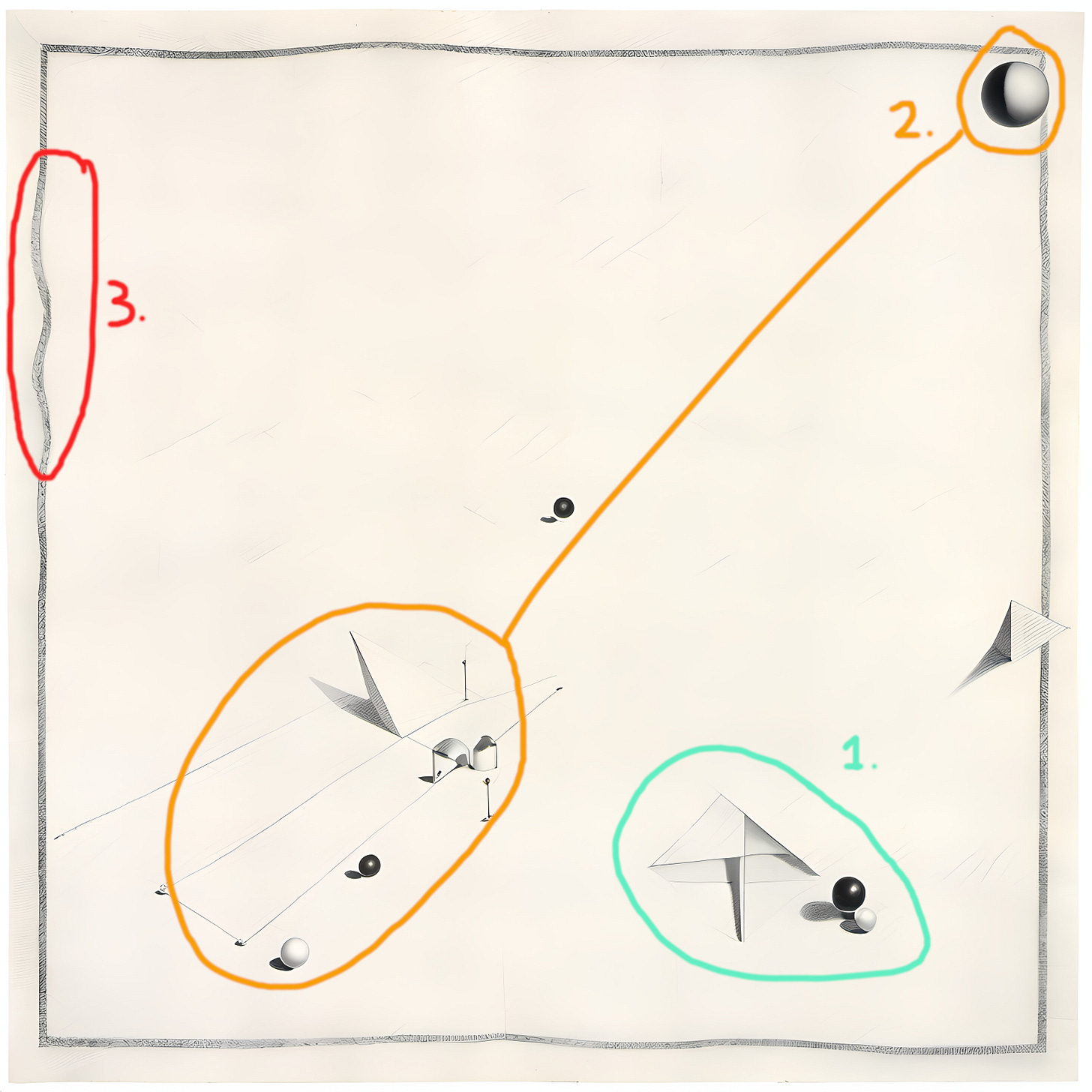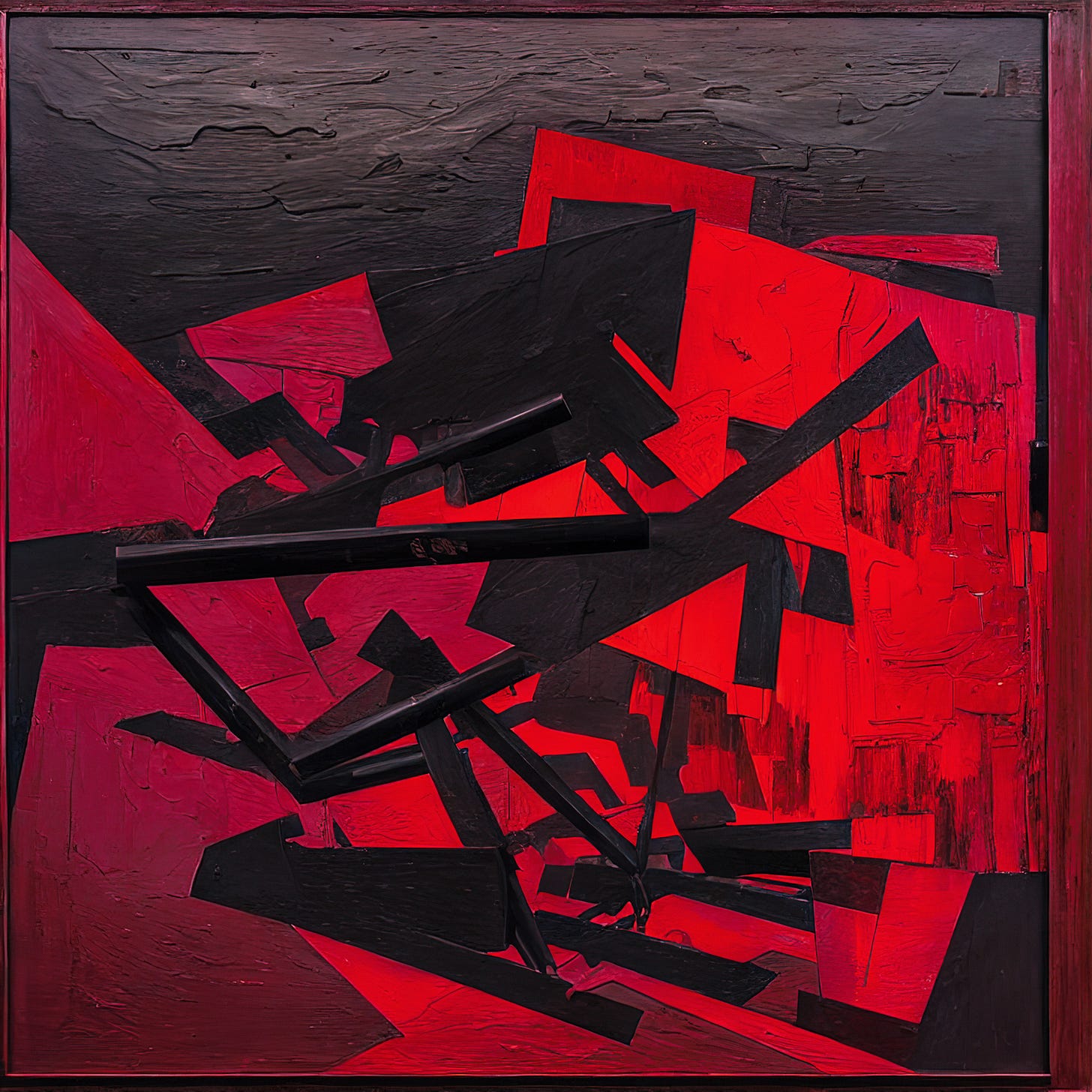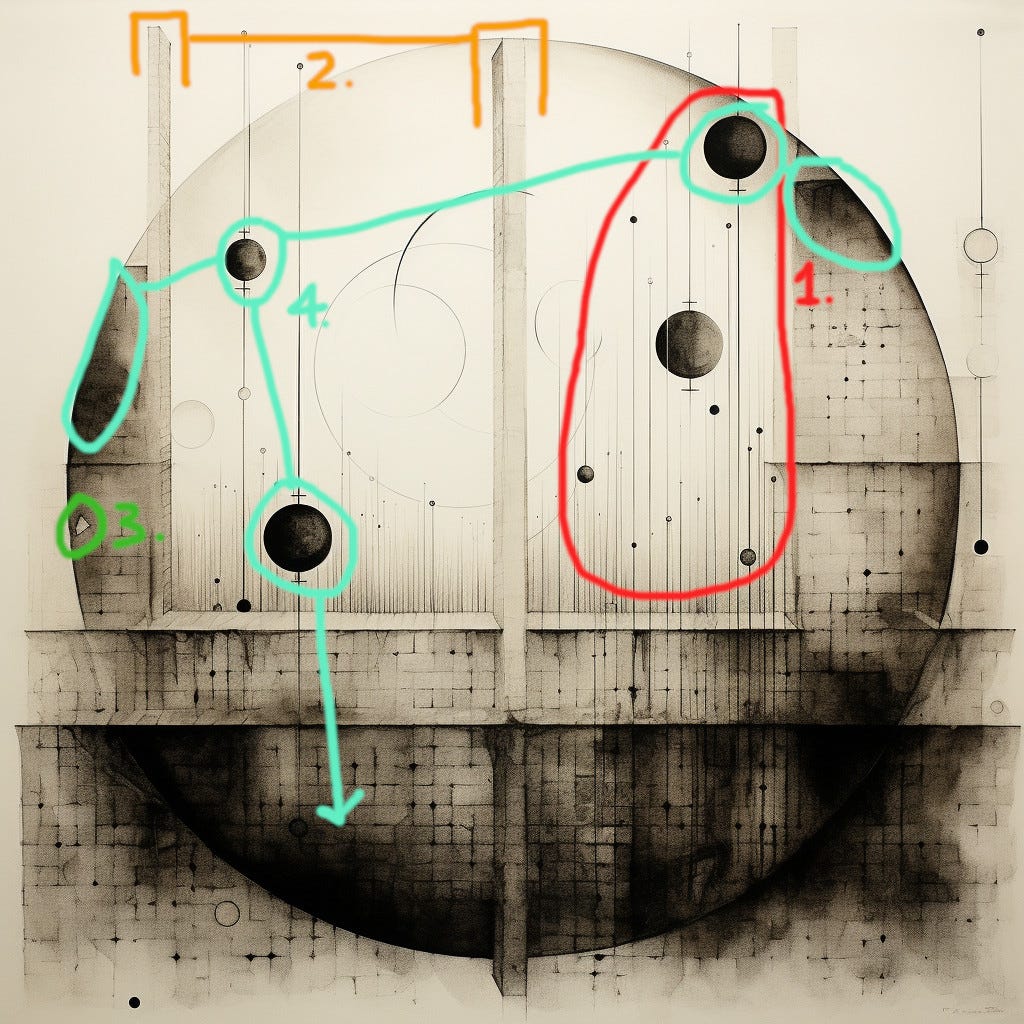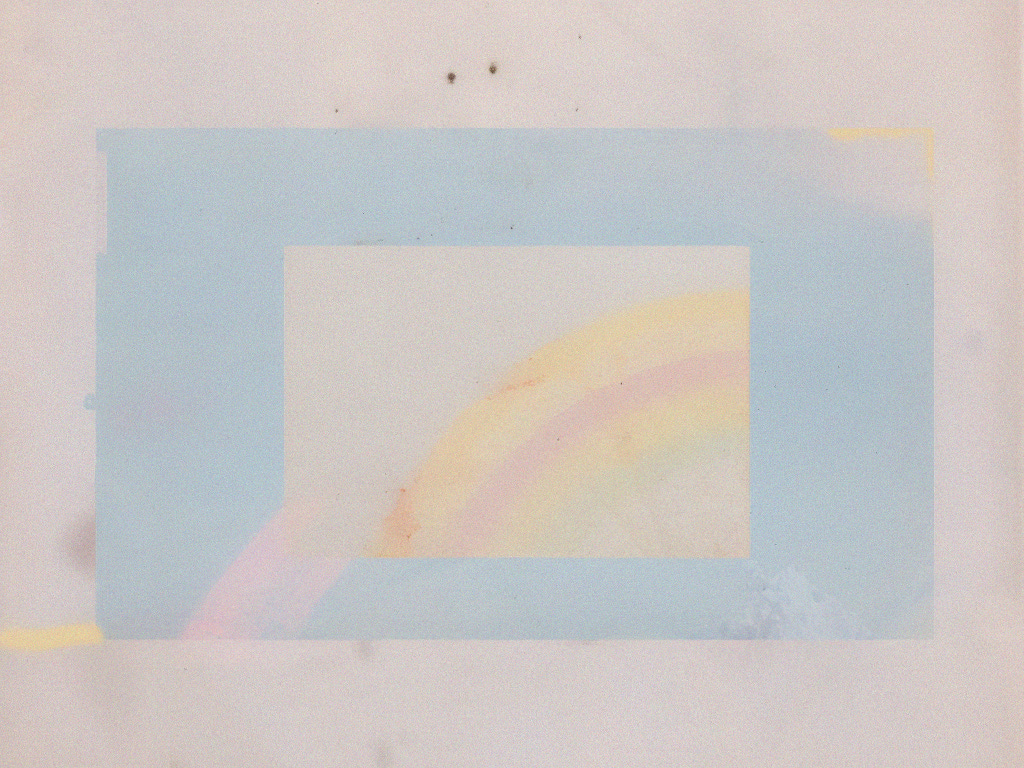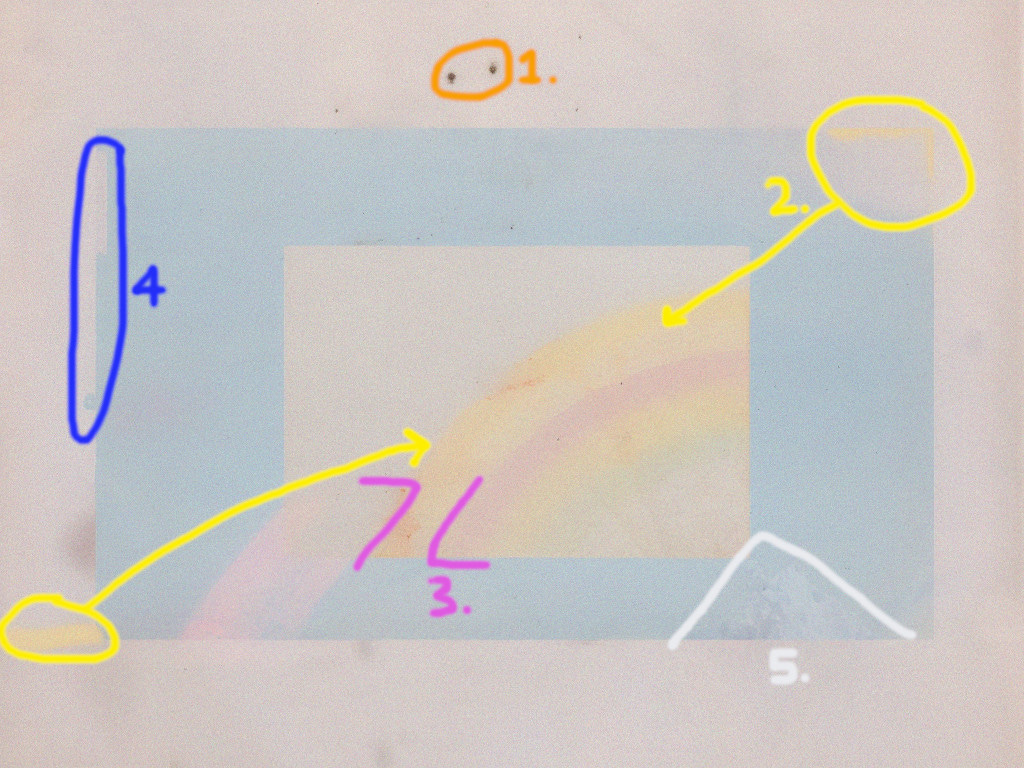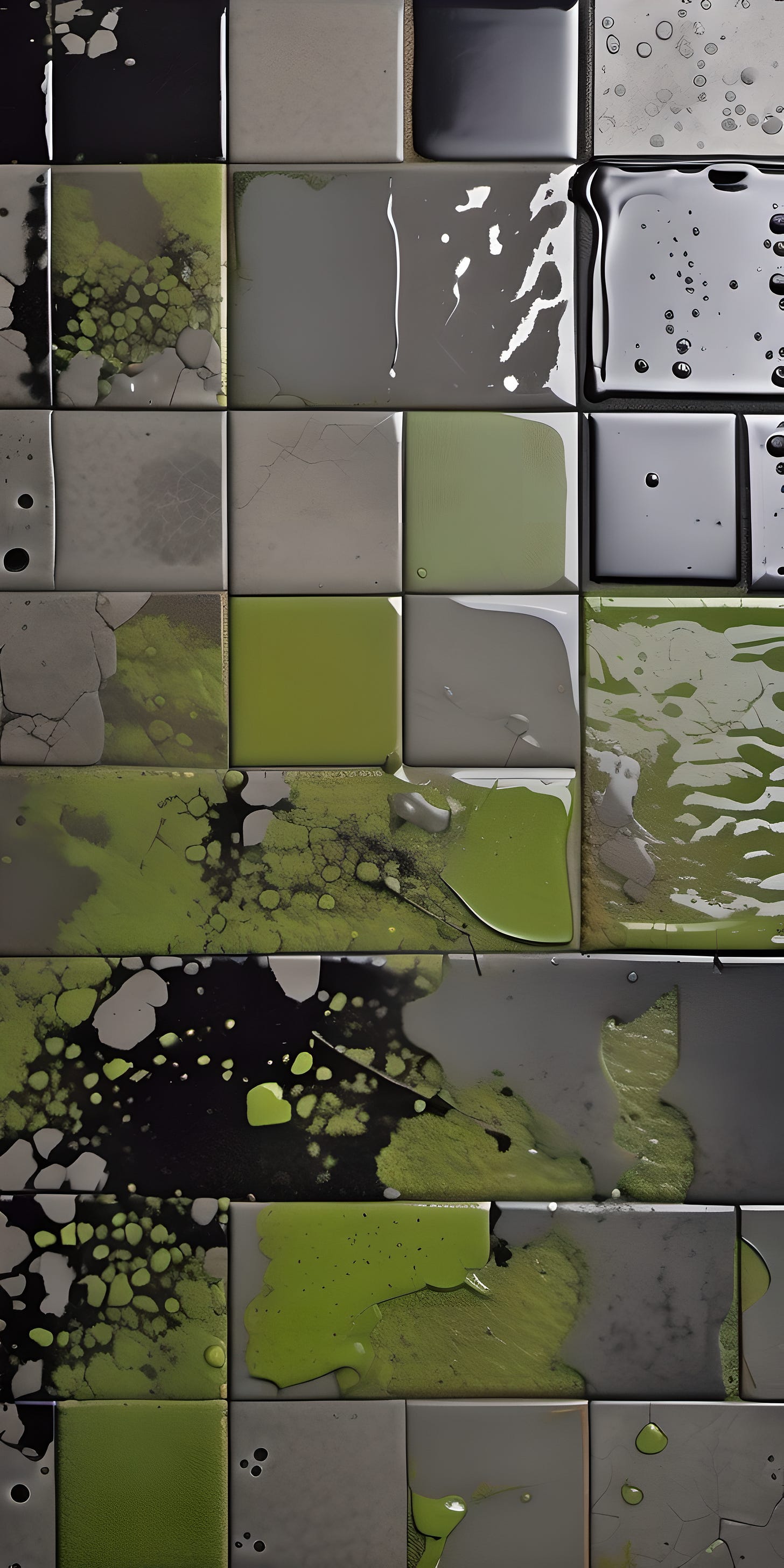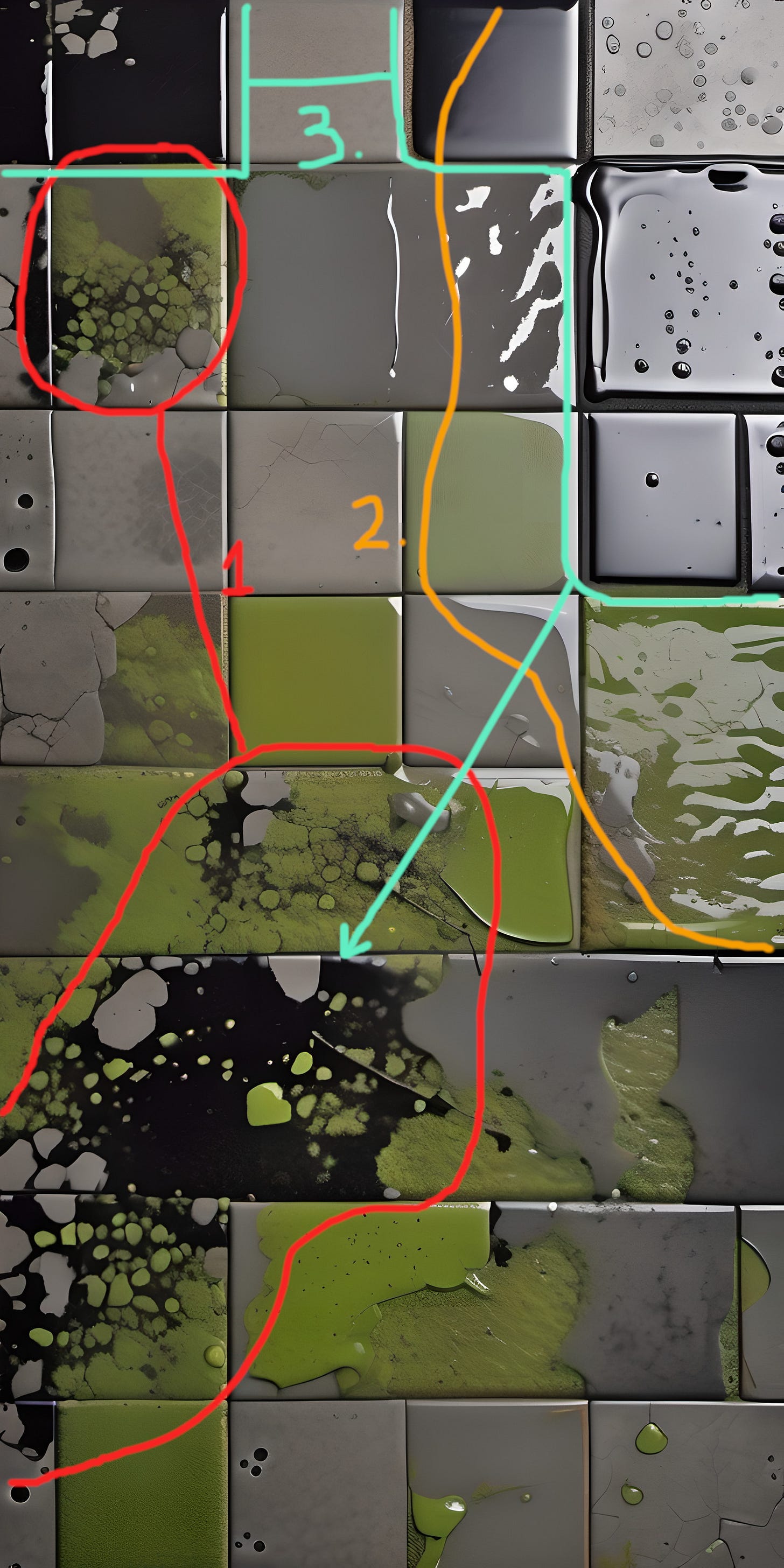Abstract Art Analysis 13: AI Edition
Explore abstract galaxies, tiles, rainbows, and the mind-bending realm of synthography.
Welcome to AAA 13!
This week, we explore six unique forms of abstract art through the lens of AI. I hope you enjoy!
Content:
Art:
‘Astra Arborealis #3’ by Ira Greenberg
‘"a trip to PI" (in all its absurdity) #12’ by Lars Nagler
‘Eraiki 099’ by Iban
‘GEOMETRIC UNIVERSES #7’ by Silvana
‘false rainbow’ by motherlouisiane
‘the artist's floor wallpapers #6’ by Clint Fulkerson
Other cool things: An AI mockumentary and a new found source of contemporary composers.
‘Astra Arborealis #3’ by Ira Greenberg
First impression:
When you visit the landing page of a collection on Emergent Properties, you see a randomly chosen piece displayed before you scroll down to see the rest of the outputs. #3 was the first piece shown to me and I instantly loved the pure abstraction. When I looked at the rest of the collection minted so far, it was revealed to me that the entire collection was not abstract like this one. This was a theme of trees mixed with stars and galaxies.
I was excited to see all the different ways the algorithm combined these elements and the varied degrees of weightings used. Some have very defined features of trees, others look almost fully like a galaxy scene, then you have everything in between. At the time of this writing, there are still a lot of unminted pieces, so it will be fun to see how the full collection turns out.
Using the description of the collection, we can make some guesses about some of the guiding techniques used here.
Ira mentions L-systems. This is a recursive branching technique used in a lot of generative art where you typically begin with a single point and make instructions for a line to be drawn by moving forward so many steps, then turning. Repeating this with multiple branches gives a tree-like structure. The use of L-systems, combined with the power of AI, abstracts the visual result and appears to add a third dimension to the technique as well. The varied intensities of light from the stars add to this effect.
Polygonal geometry is also mentioned. It seems the stars act as nodes for connecting lines. This could be achieved with an L-system, but could also be randomized connections of points, resulting in the formation of polygonal shapes.
There are these denser areas where you see a lot of whispy lines shooting out in all directions. These dense clusters of points result in denser branching, but what I find interesting is how the branches are cut short, mostly when they get near the outer edges of the canvas.
Filling in much of the space of the structure is this cloud-like nebulous material. It seems somewhat connected to the lines and points, almost like finer tissue connecting everything. At the same time, it also looks a bit separated in some areas, leading one to think an entirely different technque is being used here.
Check out the piece here.
Follow the artist here.
‘"a trip to PI" (in all its absurdity) #12’ by Lars Nagler
First impression:
My first thoughts about a piece of visual art sometimes begin as a visual link to a piece of music that looks very similar in my mind’s eye (ear’s eye?). I immediately thought of the sparse and somewhat pointalistic style of Anton Webern’s piano music, as well as the style of some of Marco Momi’s music.
I’m a big fan of the open space used and the abstract shapes that look reminiscent of aerial views of farmland mixed with imperfect moon-like spheres. I also really like the off-white, lightly textured, color of the background as it is soft on the eyes.
There is a great counterpoint of simple shapes happening in the entire piece where you have soft spheres mixed with hard-angled shapes, mostly triangles, then other slight variations of these two main elements.
The largest sphere is dark and adds a weight to the opposite corner of the canvas that balances the bottom left area of highest density.
This is a really fun detail. All of the border lines are mostly straight with only a little waviness, but this area is more wavy than the rest and it happens to be in the area where there is the most open space. It is a subtle way to add a little activity in this area to balance with the rest of the piece.
There is also a poem associated with the collection. The original is in German, so I’ve translated it to English since this is primarily an English publication. Note that the subtleties may be lost in translation.
Numbers dance, wild and colorful,
In the dance of mathematical wonder.
A puzzle game in a circle of numbers,
Where poetry proclaims the truth.
-
In this riddle, swirling, askew,
Reason loses itself in the Dada hustle.
The inexplicable becomes a sea day,
Where words break and thoughts move.
-
The language of mathematics, absurd and wise,
An unusual, shrill move.
Where sense and nonsense deceive each other,
In the Dada realm, the flight rests.
Check out the piece here.
Follow the artist here.
‘Eraiki 099’ by Iban
First impression:
The sheer loudness and movement of unstable lines in bold reds mixed with heavy blacks makes this piece a difficult one to pass up upon initial exposure. However, even though the alarming color catches your attention right away, there are other elements that hold you a bit longer.
Iban mentions “synthography” in the tags of the piece. This use of photographic synthesis is one of the main processes that makes AI art so different from anything else. I’m fascinated by some of the seemingly accidental results of that process that bring external real-world aspects into a piece like this one.
One of these aspects is the frame around the painting. Since this piece isn’t a photograph of a framed piece on a wall, but is, in fact, a complete work on its own from edge to edge, there’s this confusing in-between-realms thing that is super fascinating and completely exclusive to AI art.
The lighting here is another one of those external real-world things that add to the back-and-forth mental processing that occurs while pondering about how these details are meant to operate in this work.
There’s an interesting blending of 2D and 3D happening throughout the piece. In the case marked here, it looks as if wood or stone is emerging from the paint.
Collect or bid on the piece here.
Follow the artist here.
‘GEOMETRIC UNIVERSES #7’ by Silvana
First impression:
I was intrigued by this piece because I liked the way, at first glance, it initially implies symmetry (which is present in a few pieces from the collection), then quickly breaks the idea of symmetry in many ways after looking for a second longer. I also like monochrome palette and dark gaseous textures in the bottom half.
The use of lines connected to spheres of various sizes gives the impression of a solar system mobile.
These structures are angled in different ways that are not realistic, an aspect that adds further abstraction and makes you wonder how and why the 2D and 3D parts relate overall.
Much of the work uses repetition of motives, but there is a tiny detail here that has a different feel from the rest.
The dark sphere’s and two smaller “gaseous” areas in the top half bring balance to the dark bottom half.
Collect or bid on the piece here.
Follow the artist here.
‘false rainbow’ by motherlouisiane
First impression:
The thing that caught my attention was the overall feel. There’s a complexity of emotion in the way ML uses rainbow imagery and pastels on a dirty paper texture. The title, “false rainbow”, also alludes to a dark spin on something known for its magic and purity. What I find interesting about this thought is that an actual false rainbow is not something that ilicits a negative connotation. It is actually quite a beautiful optical phenomenon in the way it forms like a regular rainbow but less, and different, colors are present.
These spots and the smaller ones around them add the most to the feel of an innocent theme being dimmed by the dirty paper.
This is a fun way to distribute the yellow in a mostly even way diagonally across the piece.
I really like how a part of the rainbow comes out of the established frame and displaces the pink, which is also magnified.
This area adds a sort of glitched effect to the blue frame that you don’t see anywhere else. I like the conscious placement of this in the composition as it adds to an otherwise untouched area of the piece.
ML uses mountains a lot in his newer works in this style. This is one of the few that I thought didn’t contain mountains until I looked closer and the very faint texture here.
Collect or bid on the piece here.
Follow the artist here.
‘the artist's floor wallpapers #6’ by Clint Fulkerson
First impression:
The most obvious aspect I believe anybody notices first here is the incredibly realistic tactil texture of the piece. It’s truly looks like shiny, smooth, tiles that you can reach out and touch. The color palette, the paint-like drips, and the natural mossy effect in some areas are all things that I consider really great about the work. I also like the way all of the tiles are perfectly defined but vary in size.
A few notes on composition:
All of the corrosive/mossy textures create the height of activity and complexity in the left side of the work. The greater area in the bottom sort of gives more gravity to the piece even though it’s not necessarily a vertical image.
There’s the real-world light aspect as we saw in the Iban piece, but it acts more naturally here as this piece is closer to a photograph than the other one. It still, however, begs the question of whether we should consider this a manufactured photograph or a stand-alone abstact work that has something alluding to a light source. Though, on second thought, this is a 3D piece, in effect, and all 3D works make use of external lighting.
A nice balance of black across the canvas marked here.
Check out the piece here.
Follow the artist here.
Other cool things:
Check out this super high quality AI mockumentary:
If you’ve been reading this Artletter for at least a few weeks, or have read the intro post, you know how much I love contemporary classical compositions. I recently stumbled across this YouTube channel by PROJECT21st and discovered several new composers I really like. Check it out:
That’s everything for this week!
In the next week or two I’ll be releasing a new series that I believe will give you a lot of value in the realm of digital art and its creators👀. Don’t miss it!
Thank you for reading!
-LW🤘

